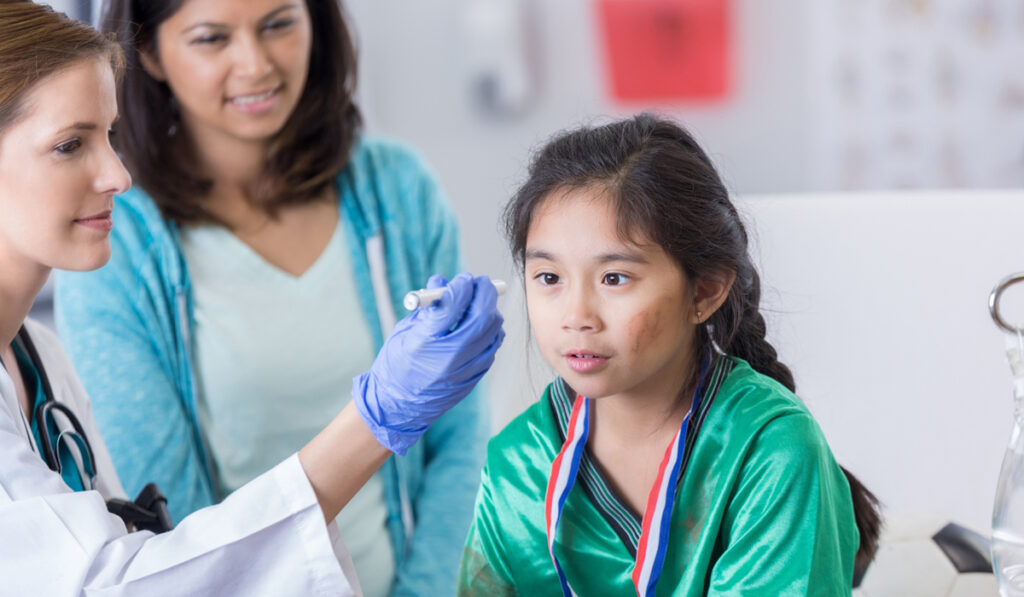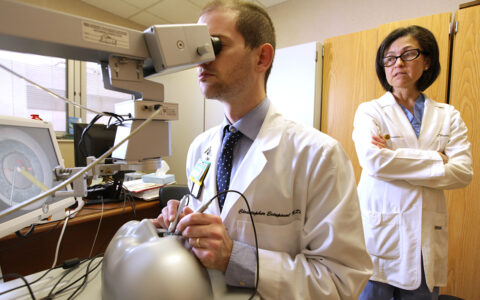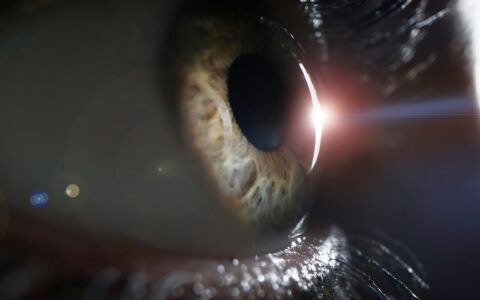Visual symptoms are common in children and adolescents following a concussion, and it is essential that pediatricians and other clinicians know how to screen, identify, and initiate clinical management in its wake.
In a first-of-its-kind policy statement in Pediatrics, the official peer-reviewed journal of the American Academy of Pediatrics (AAP), the updated guidelines were issued in conjunction with the American Academy of Ophthalmology, the American Association for Pediatric Ophthalmology and Strabismus and the American Association of Certified Orthoptists.
Sean Donahue, M.D., Ph.D., the Sam and Darthea Coleman Professor of Pediatric Ophthalmology at Vanderbilt University Medical Center and chief of the pediatric ophthalmology service at Monroe Carell Jr. Children’s Hospital at Vanderbilt, is a co-author of the statement.
“This first formal policy statement by AAP on the topic of concussion really synthesizes the literature over the past five to 10 years that shows there are neurologic abnormalities that happen within the brain and the brain stem that can be observed and treated as necessary,” Donahue said.
Visual Connections
Concussion affects about 1.4 million children and adolescents annually in the United States, occurring most often in sports and recreational settings. Chronic and repeated concussions can lead to severe and permanent brain injury, which has been reported in professional football players.
The AAP statement notes that in one study from a tertiary referral center, 69 percent of children and adolescents with a concussion were reported to have at least one associated vision disorder.
According to the statement, early identification and management of visual symptoms, such as convergence insufficiency, in which the eyes don’t work together, or accommodative insufficiency, the inability to focus on nearby objects, may mitigate any potentially negative quality-of-life impacts.
Role of Pediatricians
Pediatricians play an important role in the initial diagnosis and management of children who have suffered a concussion, Donahue said. They are usually the point of entry into the health care setting. Visual complaints are among the myriad symptoms that patients report after a concussion, including blurred vision, light sensitivity and double vision that occur in up to 40 percent of children and adolescents after concussion, the statement says. Other symptoms may include losing one’s place or eye fatigue when reading.
While concussion symptoms in most patients spontaneously resolve in about four weeks, up to one-third of patients may have prolonged symptoms, Donahue said.
Children may struggle to articulate specific visual complaints, so clinicians should have an elevated “index of suspicion” to identify those concerns, he added.
Need for Additional Research
A lack of high-quality evidence supporting isolated treatment of concussion-associated visual symptoms, such as double vision or blurred vision, with vision therapy was noted in the guidelines, and additional study is needed in that area, Donahue said. Until then, vision therapy is not considered an appropriate treatment. However, reading glasses, with or without prisms, may be considered.
“Parents are very concerned about their kids in contact sports having repeated concussions playing football or soccer or because they banged heads with someone on the trampoline,” Donahue said. “There’s been a real controversy in the field about vision rehabilitation and the best way to manage these patients.”
“It’s nice to have an official statement that the various academies recognize that gives direction to pediatricians and pediatric ophthalmologists about what to look for, how to give guidance to parents, and how to treat those who suffer from the effects of a concussion.”






